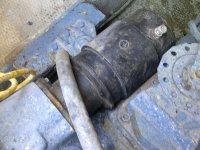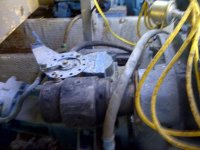dawilson76
Member
1977 34' Silverton with twin M360's. Money has finally allowed a complete rewire. On the engine side new batteries, coils, solenoids, plugs, plug wires, rebuilt starters. But both engines still extremely drag to start. In fact, a mechanic friend commented that he can't believe they even start with how hard and slow they turn over. Timing and compression checked ok. So hard to start in fact that i've melted the lugs off a couple batteries. Obviously something is very wrong and not safe. She is a project that hasn't been more than a mile from the dock because she needs so much work and is not reliable. Thus the rewire. I was asked a question yesterday that i hadn't even considered before. "Are they 24v starters?" Is this possible? Are 24v starters made for Chrysler 360's? This solution answers all problems with starting. 12v applied to a 24v starter would obviously cause it to turn very slowly.





